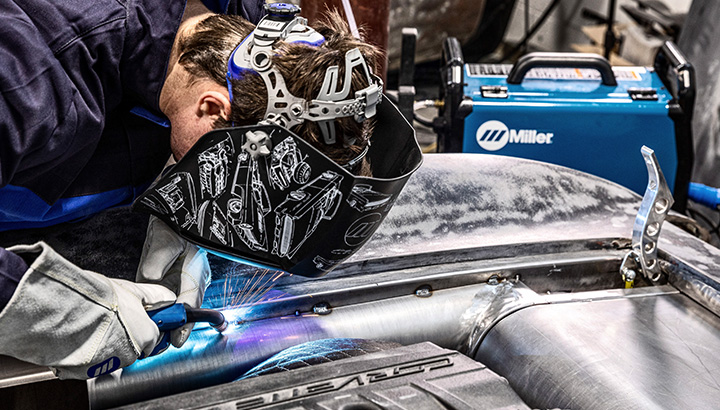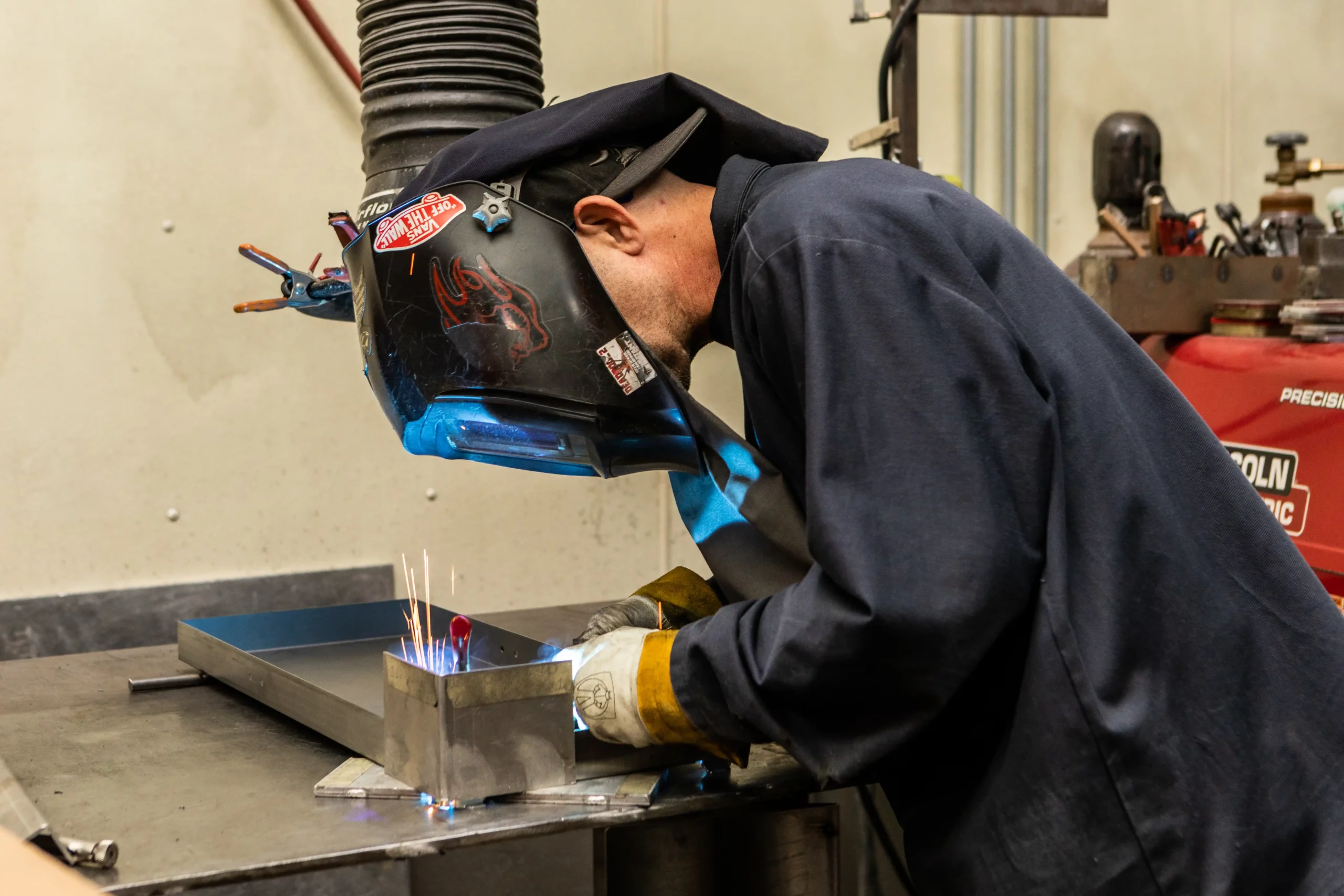Typical Welding Repair Service Issues and How to Address Them Successfully
Welding repair services often come across a variety of concerns that can jeopardize the honesty of the end product. Typical problems include poor infiltration, porosity, and misalignment, among others. Each defect offers distinct difficulties that require specific strategies for resolution. Recognizing these concerns is vital for welders intending to enhance their results and abilities. This conversation will certainly discover these usual welding repair work problems and efficient methods to address them.
Inadequate Infiltration
Insufficient infiltration happens when the weld steel stops working to totally fuse with the base material, resulting in weak joints and potential architectural failures. This issue usually stems from insufficient warm input, inaccurate electrode angle, or incorrect welding rate. Welders may run into poor infiltration as a result of a mistake of the needed criteria for a specific product density or kind. Additionally, contamination on the base material's surface area can impede efficient bonding, aggravating the trouble. To address insufficient infiltration, welders should guarantee suitable settings on their equipment and keep a clean work surface. Regular examination of welds is suggested to identify any deficiencies early, permitting prompt corrections and the avoidance of endangered architectural integrity in welded assemblies.
Porosity
Porosity is an usual problem in bonded joints that materializes as small gas bubbles trapped within the weld steel. This issue can compromise the honesty of the weld, causing reduced toughness and potential failing under anxiety. Montana Mobile Welding and Repair Welding. Porosity usually arises from contamination, wetness, or incorrect welding methods, which enable gases to get away into the liquified weld swimming pool. To deal with porosity, welders should guarantee appropriate surface preparation, maintain a tidy working environment, and utilize suitable welding specifications. Additionally, picking the appropriate filler product and shielding gas can mitigate gas entrapment. Routine inspection and testing of welds can aid determine porosity early, ensuring prompt restorative activities are taken, thereby preserving the top quality and reliability of the bonded structure
Misalignment
Imbalance in welding can arise from various variables, including inappropriate setup and thermal growth. Understanding the source is vital for reliable resolution. Numerous modification strategies are offered to realign components and guarantee structural honesty.
Reasons for Misalignment
Welding imbalance usually comes from a range of underlying problems that can compromise architectural integrity. One main reason is inappropriate fit-up of parts before welding, which can lead to voids and unequal surfaces. Variations in thermal expansion during the welding procedure can additionally result in distortion, particularly if the products being signed up with have different coefficients of development. Additionally, insufficient fixturing and securing may fall short to hold elements safely in area, leading to motion throughout welding. Inadequately maintained equipment, including welding machines and devices, might introduce inconsistencies in the weld bead, further adding to imbalance. Ultimately, driver mistake, stemming from insufficient training or experience, can also play a substantial duty in developing misaligned welds.
Adjustment Techniques Readily Available
Attending to misalignment properly requires a mix of corrective techniques tailored to the particular issues handy. One usual approach is using jigs or fixtures to hold elements in the proper placement throughout welding, making certain regular positioning. In addition, preheating the products can help in reducing distortion and improve fit-up. For significant misalignment, mechanical adjustment strategies, such as making use of hydraulic jacks or clamps, can be utilized to remedy the position prior to welding. Post-weld warm therapy might additionally be necessary to ease stress and anxieties triggered by misalignment. Mindful assessment and modification throughout the arrangement stage can prevent misalignment concerns from coming to be substantial problems, promoting a smoother welding procedure and boosting overall architectural honesty.
Distortion
Distortion is a common difficulty in welding that can arise from different factors, consisting of irregular heating & cooling. Understanding the reasons of distortion is crucial for applying effective avoidance methods. Resolving this concern not just boosts structural honesty yet also enhances the total high quality of the weld.
Sources of Distortion
When subjected to the extreme warm of welding, products usually undergo modifications that can bring about distortion. This phenomenon largely occurs from thermal growth and tightening during the welding process. As the weld area warms up, the product expands; upon air conditioning, it gets, which can produce interior stress and anxieties. In addition, irregular home heating throughout a workpiece can exacerbate these anxieties, causing bending or bending. The sort of product likewise plays a significant duty; metals with differing thermal conductivity and coefficients of growth may respond in different ways, resulting in unpredictable distortions. In addition, bad joint layout and inadequate fixturing can add to misalignment throughout welding, enhancing the probability of distortion. Comprehending these reasons is essential for efficient welding repair and avoidance approaches.
Prevention Techniques
Reliable prevention strategies for distortion throughout welding focus on controlling warm input and making sure appropriate joint layout. Preserving a consistent warmth input helps to minimize thermal growth and tightening, which can cause distortion. Making use of strategies such as preheating the workpiece can also minimize the temperature slope, promoting consistent heating. Furthermore, picking suitable joint designs, such as T-joints or lap joints, can boost security and lower anxiety concentrations. Executing proper fixturing to secure the work surfaces in position even more aids in keeping positioning throughout the welding process. Staggered welding sequences can distribute warmth much more uniformly, protecting against localized distortion. By applying these techniques, welders can substantially reduce the probability of distortion and enhance the general top quality of their welds.
Cracking
Splitting is an usual problem website link run into in welding fixings, commonly arising from various factors such as inappropriate air conditioning prices, material selection, or inadequate joint preparation. The event of splits can substantially jeopardize the stability of the weld, bring about possible failures throughout procedure. To resolve this issue, welders should initially examine the source, making sure that products are suitable and appropriately picked for the details application. Furthermore, managing the cooling rate during the welding process is parkside mig welder crucial; fast air conditioning can generate tension and lead to cracking. Correct joint style and preparation additionally add to reducing the threat. Implementing these approaches can enhance weld high quality and longevity, eventually reducing the likelihood of fracturing in ended up weldments.

Incomplete Blend
A significant problem in welding repair work is incomplete blend, which takes place when the weld metal does not sufficiently bond with the base material or previous weld passes - Belgrade Fabrication. This issue can cause weak points in the joint, possibly jeopardizing the honesty of the bonded structure. Aspects adding to incomplete fusion include not enough heat input, improper welding method, and contamination of the surfaces being joined. To resolve this problem effectively, welders must assure proper pre-weld cleansing and surface area preparation, along with readjust their welding parameters to accomplish ample penetration and combination. Normal evaluation throughout the welding procedure can additionally aid identify insufficient blend early, allowing for prompt rehabilitative steps to boost the general top quality of the weld
Overheating
While welding repair services can enhance architectural honesty, overheating offers a substantial difficulty that can bring about material deterioration. Too much heat during welding can alter the mechanical residential welding rotator properties of metals, causing decreased toughness, increased brittleness, and bending. This sensation is especially essential in high-stress applications where architectural integrity is critical. Identifying overheating can entail aesthetic assessments for staining or distortion, in addition to keeping an eye on temperature during the welding process. To mitigate the threats related to overheating, welders need to use appropriate methods, such as controlling warm input, adjusting travel rate, and using appropriate filler products. In addition, implementing pre- and post-weld warm therapies can aid recover product homes and improve the general top quality of the repair service, ensuring long-lasting efficiency and safety.
Often Asked Questions
What Are the Typical Signs of a Welding Flaw?

Exactly How Can I Check My Welds for Quality?
To check welds for quality, one can make use of visual examinations, ultrasonic testing, and radiographic techniques. Each strategy guarantees architectural stability, determines problems, and confirms adherence to specified requirements, inevitably boosting the integrity of the welded joints.
What Safety and security Safety Measures Should I Take While Welding?
When welding, one should focus on safety by using ideal personal safety equipment, making sure correct air flow, protecting combustible products away, preserving a tidy work area, and knowing environments to stop mishaps and injuries.
Can I Fix a Weld Without Remodeling the Entire Joint?
Fixing a weld without redesigning the entire joint is feasible, depending on the damage (Montana Mobile Welding and Repair Welding). Strategies such as grinding, adding filler product, or utilizing a welding procedure can efficiently attend to details problems while protecting the bordering structure
What Equipment Are Necessary for Effective Welding Repairs?
Crucial devices for reliable welding fixings consist of a welding device, cable brush, mill, protective equipment, clamps, and filler products. Each tool plays a crucial duty in making certain quality and safety throughout the repair procedure. Porosity typically emerges from contamination, moisture, or incorrect welding strategies, which allow gases to leave right into the liquified weld pool. Improperly conserved tools, consisting of welding devices and devices, may present inconsistencies in the weld grain, additional adding to imbalance. When subjected to the intense heat of welding, products often go through adjustments that can lead to distortion. Breaking is a common issue experienced in welding repair work, commonly resulting from numerous variables such as incorrect cooling rates, material selection, or inadequate joint prep work. A substantial problem in welding repair services is incomplete fusion, which takes place when the weld metal does not effectively bond with the base material or previous weld passes.